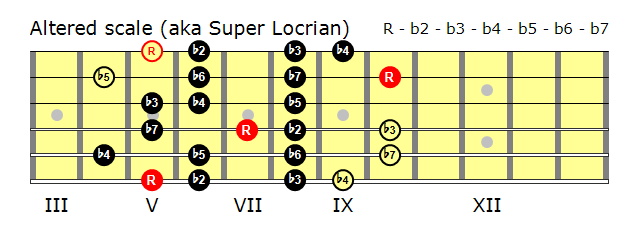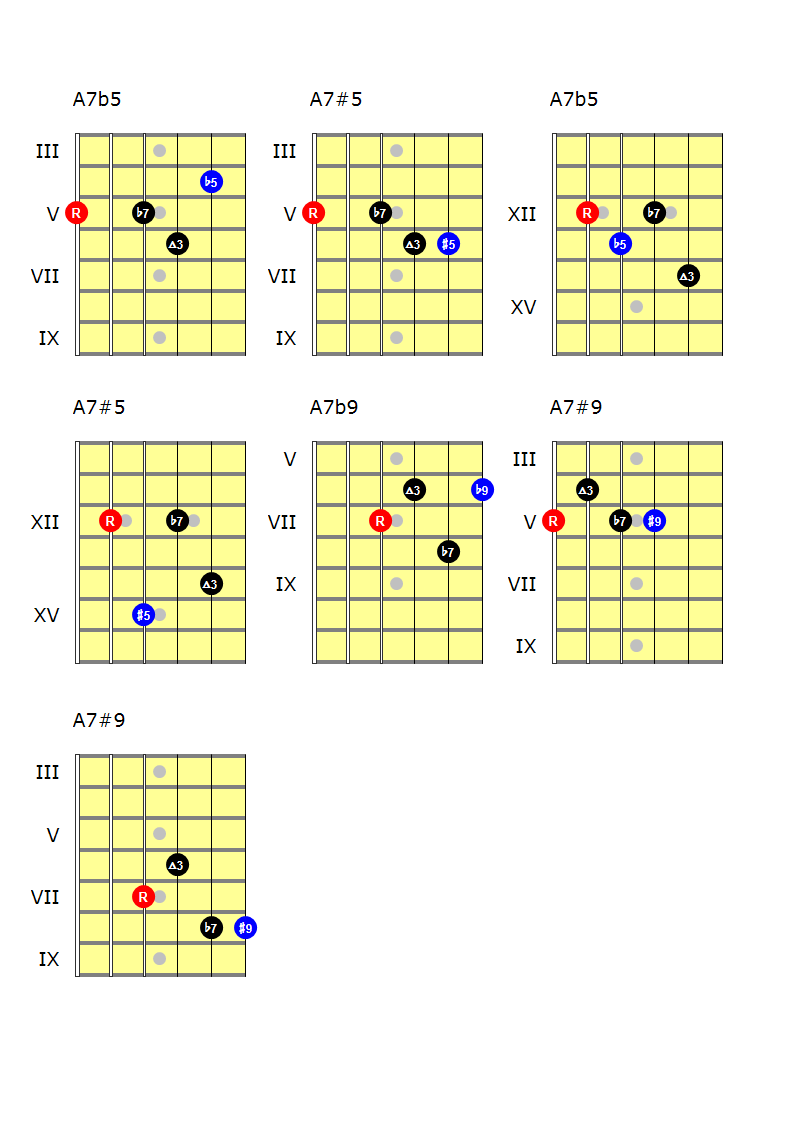Continuing my look at Melodic Minor modes this post covers mode 7, the Altered Scale. This mode is also known as the Super Locrian scale or the Locrian b4 scale.
Scale formula
The formula for the Altered Scale scale is:
R - b2 - b3 - b4 - b5 - b6 - b7

Chords
- Dom7alt (the altered Chord)
Possible extensions/tensions: b9, #9, b5, #5

Usage
If we build a chord from the Altered Scale scale using the traditional approach of stacking every other note (i.e. R – b3 – b5 – b7 plus tensions) we get a chord with a strange and unpleasant dissonance. So we need to re-harmonise this scale to make sense of it.
A good way to do this is to treat the b4 as a major 3rd because they are the same interval (3 semitones). In effect, the b3 now takes second place to the b4 which, as we have seen, is equivalent to a major 3rd. So, if we play R – b4 (3) – 5 – b7 we actually end up with a dominant 7 chord. Remember, whenever we get a major 3rd and b7 they will dominate, and we get a dominant chord.
Looking at the remaining notes, the b2 can be thought of as a b9, the b3 can be thought of as a #2 (or #9), and the b6 can be thought of as a #5. We also have the b5 as part of the scale too. Given all of that we end up with the following possible tensions:
• b5
• #5
• b9
• #9
A dominant chord with one of those tensions is known as an altered chord.
The altered dominant chord is typically used in minor ii-v-i progressions. It is also possible to borrow this chord in a major ii-V-I.
